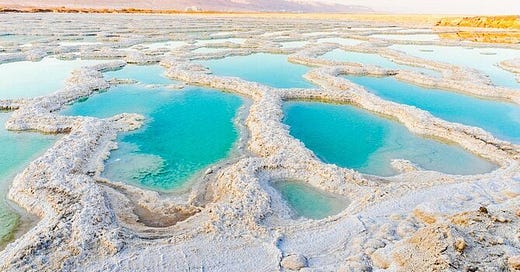Dead Sea
The Dead Sea is a landlocked lake bordered by Jordan, Israel, and the West Bank. At more than 1300 ft. below sea level, it is the world’s lowest body of water, and the lowest point of land on Earth is on its shores. It is also one of the world’s saltiest bodies of water, with a salinity fluctuating around 31.5%. About nine times saltier than the ocean, this harsh environment makes the Dead Sea nearly unlivable; hence its name. Once over 400 square miles, the Dead Sea is rapidly receding and now has a surface area of about 234 square miles. A major source of gypsum, bromine, and potassium compounds like potash, it has an extremely high density, which makes swimming feel like floating. Its rejuvenating black mud — abundant in magnesium and calcium — is used to make facial masks and body wraps, and Cleopatra is said to have believed in its healing properties. Due to the high atmospheric pressure, the air around the Dead Sea has more oxygen than anywhere on Earth. The Dead Sea receives almost all of its water from the Jordan River, which links it with the Sea of Galilee. According to the New Testament, Jesus was baptized near where the Jordan flows into the Dead Sea (called the Salt Sea in the King James Version). The ancient fortress of Masada is on its west shore. It’s known in Arabic as the Sea of Lot, and there is a column of salt nearby called “Lot’s wife.” In the book of Genesis, Lot’s wife is turned into a pillar of salt for looking back to see the destruction of Sodom and Gomorrah, which were located near the shores of the Dead Sea. In 1947, Bedouin shepherds discovered the Dead Sea Scrolls in 8 clay jars in a cave in Qumran, about 7 miles south of Jericho. These ancient manuscript fragments contain parts of every Old Testament book with the exception of Esther.




